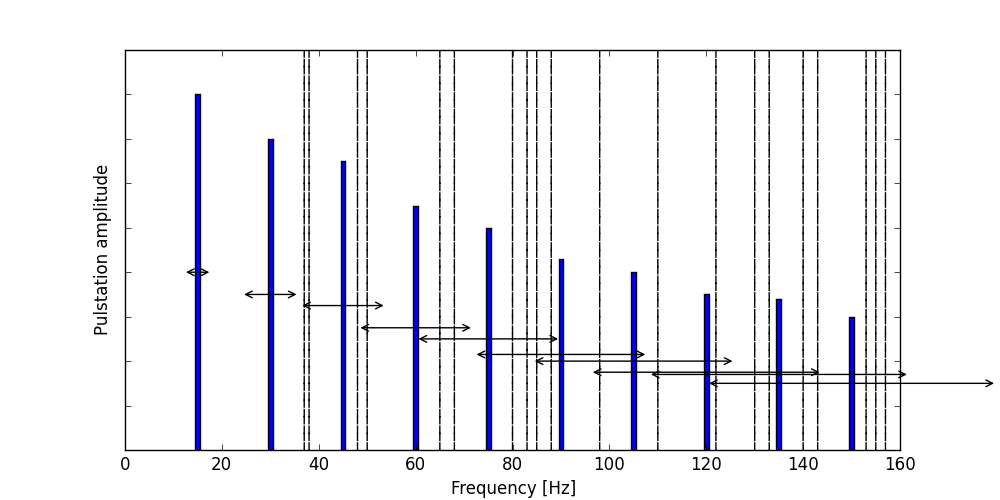
Pulsations Paper
Benefit of computational simulation of a pulsation dampener compared to an analytical method Accumulators are used to reduce pressure pulsations from reciprocating pumps by adding
The pulsation challenge of a variable speed reciprocating compressor
A pulsation analysis according to the API 618 is a good method of preventing excessive vibrations in the field and can be critical to safe and reliable operations of reciprocating compressors with high power per cylinder and high discharge pressures. Pulsations, if not dampened or managed correctly, can lead to fatigue failure, reduced valve life or excessive vibrations.
A pulsation analysis according to the API 618 involves a complex analysis of the compressor, pressure suppression device, and attached piping. The study involves a combination of acoustical study using pulsations analysis software and is often combined with a detailed mechanical analysis of the piping and supporting structure. However, even though advanced computational studies are conducted, experience shows that accurate prediction of the resulting vibrations are difficult to predict. These inaccuracies are mostly contained in the mechanical part of the analysis and are introduced through a combination of computational limitations, but more so through the uncertainties in the final as-built system [1].
Significant uncertainty margins for predicted mechanical resonance frequencies
To account for these inaccuracies, an additional separation margin of ±20% is specified between (significant) acoustic pulsations and mechanical resonance frequencies.
This separation margin can be shown in the figure below. The blue bars show the pulsation amplitudes, the dashed lines the predicted mechanical natural frequencies, aand the arrows the ±20% error margin on the acoustic frequency. From this graph the following can be noted:

When using the required separation margin, it becomes impossible to eliminate the overlap between acoustic modes and mechanical natural frequencies. Therefore, it is important to sufficiently dampen pulsations at higher frequencies to eliminate any significant excitation.

These represent acoustic modes between valves, internal baffles, and choke tubes. In order to reduce the pulsations in the system, it is important to place these three points in between the compressor operating frequencies (of multiples of 15 Hz). If the bottle is properly designed this way, the possible overlap of mechanical and acoustical modes is of less importance as no significant amount of excitation exists in the system.

What happens if the compressor becomes variable speed instead of fixed speed?
However, if the compressor is not operated at fixed speed it is no longer possible to design a pulsation suppression device that can avoid acoustical resonance at all operating speeds. Therefore, the system becomes high risk. Even though a detailed analysis of both the acoustical and mechanical characteristics is made, the uncertainty of the mechanical analysis concludes to an inaccurate prediction of the vibration levels. Any potentially critical operating speeds that are identified through the computational methods are therefore also found to be inaccurate. Fortunately, this uncertainty can be mitigated using vibrational measurements in the field during commissioning. Based on these measurements any potentially damaging operating speeds can be correctly identified and should be avoided during future operations.
For more information regarding pulsations studies and vibrational measurements visit our Pulsation and Vibrations service page.
BOSpulse
Dynaflow offers a complete solution for engineers looking for a tool to solve their acoustic and mechanical response problems for their reciprocating equipment. Our pulsation analysis software BOSpulse can be used for automated API618 pulsation and vibration analysis with easy modelling and assessment of both the piping and structural steel. For more information regarding pulsation analysis software BOSpulse visit www.bospulse.com
Interested to know more? Please contact:
Wijnand Schoemakers
Project Engineer
+31 85 058 00 46
[1] The new fifth edition of API 618 for reciprocating compressors – which pulsation and vibration control philosophy should you use?, J.D.Tison, K.E.Atkins, Proceedings of the 30th turbomachinery symposium


Benefit of computational simulation of a pulsation dampener compared to an analytical method Accumulators are used to reduce pressure pulsations from reciprocating pumps by adding
Laan van Oversteen 20
6th floor
2289 CX Rijswijk
The Netherlands
© Dynaflow Research Group BV